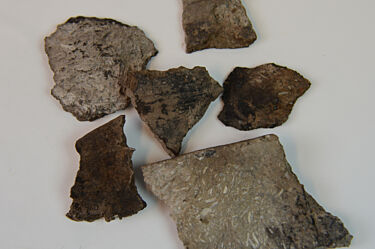
Object of the month: Ceramics in the Stone Age
Ceramics in the Stone Age
The ceramic you see here is found at Virdnejavri some 40 km south of Alta. It is a typical asbestos-ceramic, notice the long fibres in the ceramic. That’s the asbestos. Unfortunately, we don’t see any clear decoration other than a few lines and dots, so it is not classified more precisely.
Ceramics first came into use in Finnmark around 4500 BC but disappeared just as quickly. It emerged again around 2000 BC, this time mixed with asbestos. Ceramic has had different decorations through time, and are made of different materials. Therefore the ceramics can act as a boundary for different groups through space and time. For example, the period from 1800 BC to 0 BC was earlier coined “the asbestos-ceramic period” for obvious reasons: the asbestos-ceramic was in use.
Naturally, the ceramic was very important to the people using it, but archaeologists differ about what exactly it was used for. This is true particularly for asbestos-ceramics, which does not conduct heat very well and is, by some, considered unfit as cookware. Could it have been used for fermentation? Or as water containers? Some findings indicate that they were used in relation to the production of metal, but this has yet to be proven.
Written by Rune Normann, archaeologist